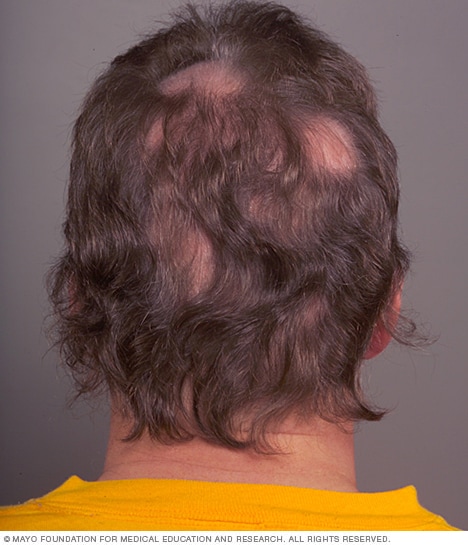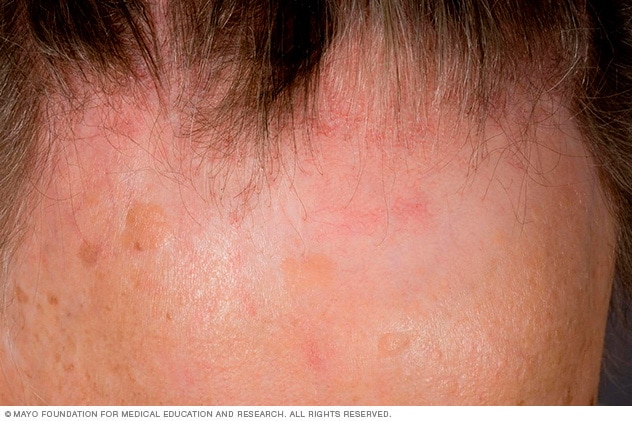Loss of hair (alopecia) can impact just your scalp or your entire body, and it can be short-term or permanent. It can be the outcome of genetics, hormone modifications, medical conditions or a typical part of aging. Anyone can lose hair on their head, but it's more common in males.
Baldness normally describes extreme hair loss from your scalp. Hereditary hair loss with age is the most typical reason for baldness. Some individuals prefer to let their hair loss run its course untreated and unhidden. Others may cover it up with hairdos, makeup, hats or headscarfs. And still others select one of the treatments available to prevent more loss of hair or bring back growth.
Before pursuing loss of hair treatment, talk with your medical professional about the reason for your hair loss and treatment options.Symptoms
Hair loss can appear in many various methods, depending upon what's causing it. It can come on unexpectedly or slowly and impact just your scalp or your whole body.
Symptoms and signs of loss of hair may include:
Steady thinning on top of head. This is the most typical type of hair loss, affecting individuals as they age. In guys, hair frequently starts to decline at the hairline on the forehead. Ladies typically have a broadening of the part in their hair. A significantly typical hair loss pattern in older women is a declining hairline (frontal fibrosing alopecia).
Circular or irregular bald spots. Some people lose hair in circular or irregular bald areas on the scalp, beard or eyebrows. Your skin may become scratchy or uncomfortable before the hair falls out.

Sudden loosening of hair. A physical or emotional shock can trigger hair to loosen. Handfuls of hair may come out when combing or cleaning your hair or perhaps after gentle tugging. This kind of loss of hair typically causes total hair thinning however is short-term.
Full-body hair loss. Some conditions and medical treatments, such as chemotherapy for cancer, can lead to the hair loss all over your body. The hair typically grows back.
Patches of scaling that spread over the scalp. This signifies ringworm. It might be accompanied by damaged hair, redness, swelling and, sometimes, exuding.
When to see a physician
See your doctor if you are distressed by relentless loss of hair in you or your child and desire to pursue treatment. For ladies who are experiencing a receding hairline (frontal fibrosing alopecia), talk with your doctor about early more info treatment to prevent considerable permanent baldness.
Likewise speak to your doctor if you see abrupt or patchy hair loss or more than normal hair loss when combing or washing your or your kid's hair. Unexpected hair loss can signify a hidden medical condition that needs treatment.
Ask for a Visit at Mayo Clinic
Triggers People typically lose 50 to 100 hairs a day. This normally isn't visible because brand-new hair is growing in at the exact same time. Hair loss happens when new hair does not change the hair that has fallen out. Household history (heredity). The most common reason for hair loss is a hereditary condition that occurs with aging. This condition is called androgenic alopecia, male-pattern baldness and female-pattern baldness. It typically takes place slowly and in predictable patterns-- a declining hairline and bald spots in men and thinning hair along the crown of the scalp in females.

Hormonal modifications and medical conditions. A range of conditions can cause irreversible or short-term hair loss, consisting of hormonal modifications due to pregnancy, childbirth, menopause and thyroid problems. Medical conditions consist of alopecia areata (al-o-PEE-she-uh ar-e-A-tuh), which is body immune system related and causes irregular hair loss, scalp infections such as ringworm, and a hair-pulling condition called trichotillomania (trik-o-til-o-MAY-nee-uh). Medications and supplements. Hair loss can be a side result of specific drugs, such as those used for cancer, arthritis, anxiety, heart problems, gout and hypertension.
Radiation treatment to the head. The hair may not grow back the like it was before.
A really difficult occasion. Numerous people experience a basic thinning of hair several months after a physical or psychological shock. This type of loss of hair is momentary.
Hairstyles and treatments. Extreme hairstyling or hairstyles that pull your hair tight, such as pigtails or cornrows, can trigger a type of loss of hair called traction alopecia. Hot-oil hair treatments and permanents also can trigger hair to fall out. If scarring happens, hair loss might be permanent.